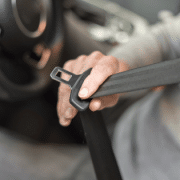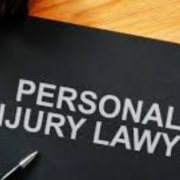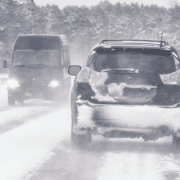What Percentage Does A Personal Injury Lawyer Take?
Most Utah personal-injury lawyers work on a “no-win, no-fee” basis, keeping about one-third of your recovery, usually 33% if the case settles and up to 40 % if it goes to trial or appeal, plus out-of-pocket costs. (Source: Utah gov)
A car accident can result in medical bills and lost wages piling up fast. Hiring a lawyer feels risky when cash is tight. Utah law firms solve that problem through contingency fees: you pay only if money comes in.
Still, many folks wonder, “How much will my attorney actually take from my settlement?”
The short answer is “about a third,” but the real figure shifts with case size, stage, and cost outlays such as expert witnesses. Knowing the typical percentages, the reasons they change, and who covers expenses helps you judge whether an offer is fair.
This article breaks down those points using plain, everyday language. We’ll look at situations that raise or lower fees, the facts that push settlements higher, and the difference between lawyer pay and case costs.
We’ll also explain why selecting a seasoned team such as Cockayne Law can leave more in your pocket at the end.
Key Points You Should Know
- No up-front legal bills for clients
- Typical fee equals about one-third of the payout
- The fee may rise if a trial becomes necessary
- Only 33% of medical malpractice fees can be charged in Utah
- Costs like experts are separate from the fee
- Bigger injuries often draw larger settlements
- Good evidence keeps percentages from climbing
- A clear fee agreement prevents surprises
What Is a Contingency Fee?
A contingency fee is simply a share of the money your lawyer wins for you. Instead of billing by the hour, the firm fronts the time and skill, then gets paid only when the case ends in your favor. If the attorney recovers nothing, you owe nothing for the fee itself. In Utah, accident attorneys often charge 33 % when a claim settles before filing suit. If the insurer digs in and a lawsuit is filed, the percentage usually moves to 40%. Up-front cost relief lets injured families hire strong counsel even when savings are gone, which is why this pay model is popular nationwide.
When Contingency Fee Percentages May Increase or Decrease
In general, one-third is a good starting point, but there are several factors that can affect the percentage up or down.
Reasons your fee share may rise:
- Lawsuit filed: Extra pleadings, depositions, and motions add work.
- Trial scheduled: Court prep, jury selection, and exhibits expand hours.
- Appeal lodged: Brief writing and oral argument mean fresh rounds of labor.
Reasons it may drop
- Early settlement: The insurer admits fault quickly.
- High-value recovery: Some firms use a sliding scale so very large payouts are not hit by the full rate.
- Clients handle certain tasks: Providing clear medical records or damage photos early can cut costs and effort.
A signed fee agreement will list each percentage bracket, when it applies, and how costs are handled.
Always ask: Does the rate include case expenses?
Most Utah firms separate fees from costs, billing the latter only after a successful outcome. In a no-win situation, you may still need to reimburse items such as copying fees or medical-record charges, though many offices, including Cockayne Law, waive those costs unless money is recovered.
Reading every clause now prevents sticker shock later.
Factors That Determine Personal Injury Settlement Amount
Your lawyer’s percentage is important, yet the size of the pie matters more. Bigger settlements leave you with more cash even after the fee. Six core issues drive settlement numbers. Understand them, gather proof early, and you will strengthen your bargaining power.
1: Medical Bills and Future Care
Medical expenses serve as the backbone of any damage claim. Insurers total up hospital stays, physical therapy, medication, and projected future care. Utah follows the “specials plus multiplier” approach: economic losses (specials) are multiplied to estimate pain and suffering. A $50,000 hospital bill could justify far higher general-damage figures, especially when doctors confirm long-term needs. Keep every invoice and follow treatment plans. Skipped appointments let adjusters argue your injuries are minor.
2: Lost Wages and Earning Capacity
Time off work drains savings quickly. Pay stubs and tax returns prove past income, while vocational experts can show how injuries cut into future earning ability. A truck driver with back surgery, for example, might never clear a Department of Transportation physical again. Insurers must then consider decades of lost pay. Bulletproof income records raise settlement value and shorten negotiations.
3: Pain, Suffering, and Loss of Enjoyment
Unlike bills, pain feels invisible on paper. Journals, counselor notes, and family statements help paint the daily reality of insomnia, anxiety, or missed hobbies. Utah has no limit on these damages outside medical-malpractice claims. Juries routinely award significant sums when credible stories match medical proof.
Show pain with clear evidence
- Daily symptom diary entries
- Photos of surgical scars or medical devices
- Testimony from friends noting lifestyle changes
These simple steps turn an abstract hardship into numbers a jury can grasp.
4: Liability Strength
Who caused the crash or fall?
Utah uses a modified comparative fault at a 50% bar. If you are less than half at fault, you still recover, but your award shrinks by your share of blame. Crisp police reports, security video, and eyewitness statements keep your percentage low, or at zero. A solid liability file can push insurers to settle quickly, sparing you the higher fee tier that starts when a suit is filed.
5: Insurance Policy Limits
No matter how severe your injuries, the at-fault party’s coverage caps payment. A slip-and-fall at a mom-and-pop store with only $100,000 in liability coverage may settle right at that figure. Your personal injury lawyer will search for extra policies, “umbrella” coverage, or other defendants such as product makers. Identifying deep pockets early can more than double the available money.
6: Litigation Posture and Trial Readiness
Insurers pay top dollar when they believe a jury will punish low offers. Filing suit, taking depositions, and setting expert deadlines all raise pressure. Skilled trial advocacy lawyers build that leverage while still aiming for a prompt, fair deal. Keeping discovery on schedule keeps the percentage from edging higher due to extended court time.
Each factor connects to the next: strong liability proof boosts pain-and-suffering multipliers, which in turn amplify medical cost numbers. Work with an injury claim specialist early so evidence grows as bills grow. Doing so protects both the settlement amount and the fee percentage you finally pay.
Contingency Fees vs. Case Costs: What’s the Difference?
Think of your claim as a small business: the contingency fee is your lawyer’s paycheck, while case costs are the business expenses that make victory possible. The fees are based on the hours spent drafting pleadings, negotiating, and presenting evidence at trial. There are costs for filing fees, accident-scene experts, retrieving medical records, preparing deposition transcripts, and preparing exhibits.
Utah ethics rules require firms to spell out costs separately and to keep detailed ledgers. Some offices advance every expense and wait for repayment; others ask clients to cover certain bills as they arise.
The arrangement matters because heavy expert use in cases like medical malpractice can top $50,000. Clarify whether costs come off the top before the fee is calculated or after.
A fee “on the net” (after costs) leaves you with more than a “fee on the gross.” Request monthly cost reports so surprises don’t pop up when settlement checks arrive.
Who Pays Costs and Expenses in Personal Injury Cases?
Under most Utah contingency agreements, the lawyer fronts costs, then recovers them from the client’s share once money arrives. This setup lets injured people get expert testimony, imaging studies, and crash reconstruction without reaching into their own pockets. If the case loses, many no-win-no-fee lawyers absorb costs themselves, but read the fine print—some contracts still require reimbursement. Costs usually rise in three stages:
- Pre-suit: filing fees, basic records, investigator mileage.
- Discovery: deposition transcripts, physician reports, accident-scene models.
- Trial: jury fees, videographers, exhibit boards, expert travel.
An open discussion at the start helps decide which expenses are worth the return.
| Item | Typical Cost Range | Paid Up-Front by Lawyer? | Repaid if You Win? |
| Police or EMS reports | $20 – $50 | Yes | Yes |
| Medical records | $25 – $300 | Yes | Yes |
| Court filing fee | $360 (state) | Yes | Yes |
| Deposition transcript | $200 – $600 | Yes | Yes |
| Expert witness retainer | $2,000 – $10,000 | Often | Yes |
| Trial exhibits | $500 – $2,500 | Often | Yes |
Make sure there is a written cost policy, keep a copy of every invoice, and track expenditures the same way you would any household budget. In a long case, trust is built on transparency throughout the case.
Hire an Experienced Personal Injury Lawyer to Get the Most Compensation
Legal skill, local reputation, and courtroom grit can raise settlements beyond raw medical bills. Cockayne Law has helped Utah families recover fair value across car crashes, slip-and-fall incidents, and wrongful-death suits.
Their team inspects accident scenes soon after, lines up experienced experts, and deals with insurance companies that try to lowball victims. And since they work on a contingency basis, their interests are aligned with yours. The more they win for you, the more you walk away with.
Physically bring pay stubs, treatment records, and photos so they can size up both the likely dollar range of the case and the fee bracket that would apply during a free consultation.
Don’t hesitate to call early, ask clear questions, and leave the paperwork to a company that knows every county courtroom from Salt Lake City to St. George.
Final Thoughts
A good personal injury attorney’s share should feel fair once you see the long hours and real risk involved. In Utah, the usual slice sits between 33% and 40%, though medical-malpractice cases top out at one-third by statute. Clear fee tiers, cost tracking, and solid evidence keep surprises away. Most of all, remember that the fee is only half the equation; the other half is boosting the total settlement through smart legal work.
With an experienced accident attorney in Utah on your side, the check you receive after fees and costs can still meet your true needs.
FAQs
What percentage do most injury lawyers take?
Most keep about one-third of the settlement, rising to 40% if heavy litigation becomes necessary.
What is a success fee in personal injury cases?
It’s the contingency percentage the lawyer collects when the case ends in your favor; no success means no fee.
Do I pay anything if I lose?
Usually not for the attorney’s work, but some contracts require you to reimburse certain costs unless the firm agrees to waive them.
Can I negotiate the contingency fee?
Yes. Many lawyers will reduce the rate for quick settlements or very large recoveries, just get the agreement in writing.
Who pays medical liens from my settlement?
Liens are typically paid out of your portion after fees and costs, though a good lawyer will often negotiate them down.
Is hiring a personal injury law firm worth the fee?
In most cases, yes. Studies show represented clients net more money after fees than unrepresented claimants do on their own.

















